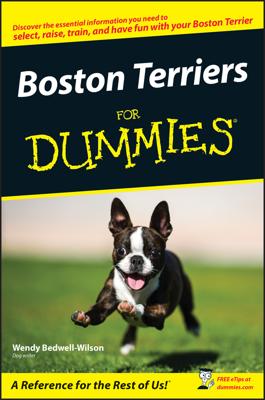Terriers, developed to get into the places larger dogs could not when pursuing prey, are not lacking in self-esteem. They know what they want, they’re not shy about going for it, and they don’t look charitably on those who get in their way.
Look at terriers as two separate groups:
What most people think of when they think terrier: Mostly small, mostly wire-coated breeds with non-stop energy. Dogs developed to dispatch rats, foxes, badgers, weasels, otters, and anything else people decided they could better do without.
These classic terriers are tireless, plucky, and stylish, equally comfortable in city, suburban, or rural homes. Even small terriers are sturdy enough to be a child’s pet, but their take-charge attitude can be a problem if they’re not socialized and trained. If allowed to rule the roost, some of these little dynamos can become little despots, a dangerous role for any dog to assume, especially in homes with children.
Breeds that resulted from crossing bulldogs and terriers to produce animals that are as solidly built and heavily muscled as bulldogs, but with the terrier’s classic tenacity and boldness. When well-bred and well-trained they can be quiet, calm companions.
The bull-and-terrier breeds have come in for some bad press in recent years. These dogs had been considered to be stable pets for generations. What prompted the change is they became popular with an element that broadened their traditional aggression toward other dogs, producing animals that were coaxed to bite. Couple this trait with these dogs’ awesome physical power and you’ve got an animal that justifiably should be feared.
Finding a reputable breeder is important for any dog you choose, but it’s absolutely crucial with these bull-and-terrier breeds. Dogs from show lines are a better bet as pets. Good temperament is always on the mind of reputable breeders, who are anxious to prove their dogs deserve a chance in the face of legislative attempts in many cities and towns to ban these breeds. Buy from anyone other than a show breeder, and you may well end up with exactly the kind of dog these laws are aimed at. Make sure, too, that you socialize these dogs.
Common behavior problems come straight from the terrier’s background: They dig and they bark, which are key tools for a dog trying to out-burrow a badger or drive out a fox from the den, but not so appreciated in a suburban backyard. Some terriers may get a little glassy-eyed and drooly over the presence of rodents in the house — you may call hamsters, gerbils, rats, and mice “pets,” but you’ll never convince a terrier they belong. Terriers may also be less than civil to other dogs.
Most terriers are small, and possessed of as good a sense of humor as you’ll find in any dog, especially if the joke’s on you. Size ranges are
Small- to medium-sized breeds (15 to 50 pounds): Australian Terrier, Bedlington Terrier, Border Terrier, Bull Terrier, Cairn Terrier, Dandie Dinmont Terrier, Irish Terrier, Jack Russell Terrier, Kerry Blue Terrier, Lakeland Terrier, Standard Manchester Terrier, Miniature Bull Terrier, Miniature Schnauzer, Norfolk Terrier, Norwich Terrier, Scottish Terrier, Sealyham Terrier, Soft Coated Wheaten Terrier, Smooth Fox Terrier, Staffordshire Bull Terrier, Welsh Terrier, West Highland White Terrier, Wire Fox Terrier.
Large breeds (50 to 80 pounds): Airedale Terrier, American Staffordshire Terrier.
While you can find short-haired terriers and silky, long-haired terriers, most terriers have a wiry coat that needs stripping (plucking of the dead hairs) to keep them in show-ring condition. You can skip this tedious task and use electric trimmers instead or have a professional groomer do the job every couple of months. Aside from this factor, these breeds are pretty easy keepers in the coat department, and they don’t shed much.

